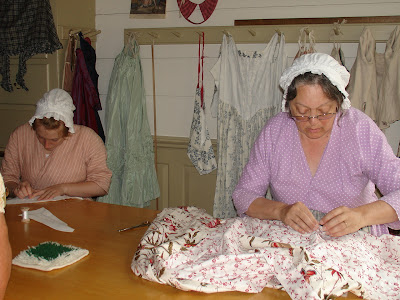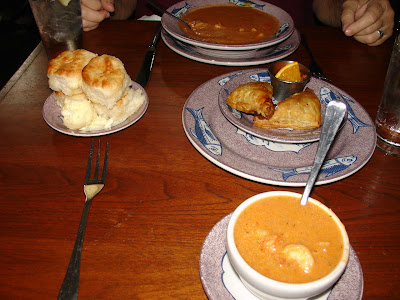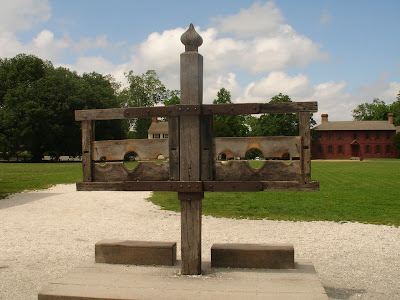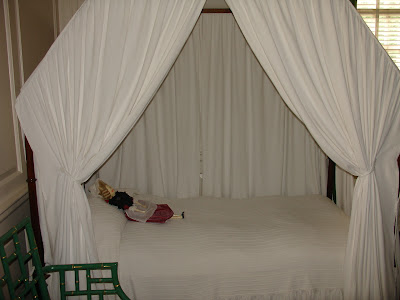Colonial Williamsburg in Virginia was on our list of places we wished to see. It is a place steeped in history. As you wander the streets of this 18th century town you will experience life during the revolution.
Colonial Williamsburg is the private foundation representing the historic district of the city of Williamsburg, Virginia. The district includes buildings dating from 1699 to 1780 which made colonial Virginia's capital. For most of the 18th century, Williamsburg was the center of government, education and culture in the Colony of Virginia. George Washington, Thomas Jefferson, Patrick Henry, James Monroe, James Madison, George Wythe, Peyton Randolph, and others molded democracy in the Commonwealth of Virginia and the United States here.
The Historic Area is an interpretation of a Colonial American city, with exhibits including dozens of authentic or re-created colonial houses and relating to American Revolutionary War history. Prominent buildings include the Raleigh Tavern, the Capitol, the Governor's Palace (all reconstructed), and Bruton Parish Church (original). Rather than an effort to preserve antiquity, the combination of restoration and re-creation of the entire colonial town attempts to re-create the atmosphere and the ideals of 18th-century American people and revolutionary leaders. Interpreters work and dress as they did in the era, using colonial grammar and diction (although not colonial accents).
Exploring Colonial Williamsburg really requires more than a one-day visit. There is so much to see and learn. But because of G's bad knee we had to take it easy and couldn't cover much of the town on foot. We settled on quality instead of quantity. Here is G resting outside James Craig Jeweller while I was inside the Millinery Shop visiting with the seamstresses.
This seamstress is working on a corset.
Another seamstress is working on a gown. All sewing is done by hand, and she is not working from any pattern.
Little boy breeches.
Charlton's Coffeehouse. Constructed as a store and residence in 1750, the building was converted into a coffeehouse and operated by Richard Charlton in the mid 1760s. In October 1765, the coffeehouse was the scene of resistance to the British Parliament's Stamp Act.
Inside the coffeehouse.
Having coffee with the priest and visitors from England.
We lunched at Shields Tavern...
...in very uncomfortable straight-back chairs.
Shrimp and crawfish soup, biscuits and beef pasties with cranberry compote. It was delicious!
After lunch we went into the Raleigh Tavern to watch a short production entitled: Fops, Rogues and Villians. It was very entertaining! Here are the fop and the lady's maid.
A slave asking the priest to intervene on her ten-year-old son's behalf. Her master is going to sell her son. The priest agrees to speak to her master and to try to persuade him that families should not be split up.
The stocks
The Magazine: Where all the weapons and gunpowder for the defence of the town were stored.
The Governor's Palace
Lord Dunmore was the last governor to reside here. He and Lady Dunmore vacated rather hastily when the colonists rebelled against the governor's order for all weapons and gunpowder to removed from the magazine and locked up here taking away the colonists right to arms.
The foyer of the Governor's Palace
Ballroom with Dutch warming stove
The gardens at the Governor's Palace.




























































These are great photos. We were there so long ago!
ReplyDeleteMy parents took us to Colonial Williamsburg years and years ago, but didn't like the fee to get in the actual historic village. I think we went to a wax museum instead.
ReplyDeleteLooking at all these pictures makes me thing a trip to Genesee Country Museum might be a good idea. :)